
































































June 2021
Vol. 88, No. 3
The pandemic has taken away many opportunities, including the chance to gather together at The Clean Show this year. So, while we wait for the exhibition in 2022, we’ve gathered our display advertisers of 2021 to date for a show of our own! This issue is your ticket, so come on in!

When a machine is down, your business can come to an abrupt halt. We’ve asked some industry experts what spare parts dry cleaners should always have on hand to minimize downtime and what steps they should take to keep their machines in good working order.
It can be challenging to find good employees in this market, so when you hire a winner, you have to make sure they’re happy at your company. Fortunately, maintaining employee satisfaction isn’t as complicated as some make it out to be. Often, all it takes is some time and attention.

Our feature-rich software will help you run all aspects of your business more e ectively. CBS includes solutions for full service cleaners, delivery & route services, racking integrations, prepay/post pay, and two-way customer messaging; all features used across the dry-cleaning industry. Ask us about more features!




Our support team is a group of dedicated professionals based in the US that takes pride in taking care of customers without making them wait. We’ve been independently owned and operated for over 20 years, o ering you the long-term trust and support you need!

As the nation gets vaccinated and the industry gets back on its feet, we’re still dealing with the fallout from the pandemic. One example of this was The Clean Show, which got pushed back to 2022. The event is one of the premier opportunities for vendors and dry cleaners to come together, and it just feels wrong that it’s not happening in a couple of months.
So, to bridge the gap, we decided to throw our own show! Our first feature in this issue is “No Clean Show? No Problem!” We’ve invited our display advertisers of 2021 to date to let us know what they’re offering and how they’ve been working to meet the needs of their clients in these challenging times. Check out their “booths” and use their contact information to start a conversation. This issue is your ticket to the show!
As customers start to return to the front counter, the last thing dry cleaners need is a broken machine to break their workflow. In our second feature, “Taking — and Keeping — Stock,” we’ve asked some experts about their recommendation for what cleaners should keep in their spare parts kit and what types of preventative maintenance are most valuable to keep everything up and running.
One of the issues keeping many dry cleaners up at night is how to hang on to their best employees. As we find in “The 4 Keys of Employee Retention,” however, some of the answers are simpler than you might think — and are often inexpensive or even free! We also have two special features this month:
In “5 Ways Dry Cleaners May Increase Revenue Through Texting,” Jessica Ayre of Text Request shares some reasons why this method of communication can make huge inroads with some of your customers. And, for “Ways to Sanitize, Validate and Monetize Your Cleaning,” Joel Jorgensen of Girbau North America shares tips dry cleaners will find useful when it comes to sanitization, a topic that’s been at the top of all of our minds for the past few months.
We’re seeing light at the end of what has been a very dark tunnel. Staying flexible and being open to new ideas are ways we can come out stronger on the other side. ADC
American Drycleaner (ISSN 0002-8258) is published monthly except Nov/Dec combined. Subscription prices, payment in advance: U.S., 1 year $46.00; 2 years $92.00. Foreign, 1 year $109.00; 2 years $218.00. Single copies $9.00 for U.S., $18.00 for all other countries. Published by American Trade Magazines LLC, 650 West Lake Street, Suite 320, Chicago, IL 60661. Periodicals postage paid at Chicago, IL and at additional mailing offices.
POSTMASTER, Send changes of address and form 3579 to American Drycleaner, Subscription Dept., 440 Quadrangle Drive, Suite E, Bolingbrook, IL 60440. Volume 88, number 3. Editorial, executive and advertising offices are at 650 West Lake Street, Suite 320, Chicago, IL 60661. Charles Thompson, President and Publisher. American Drycleaner is distributed selectively to: qualified dry cleaning plants and distributors in the United States. The publisher reserves the right to reject any advertising for any reason.
© Copyright AMERICAN TRADE MAGAZINES LLC, 2021. Printed in U.S.A. No part of this publication may be transmitted or reproduced in any form, electronic or mechanical, without written permission from the publisher or his representative. American Drycleaner does not endorse, recommend or guarantee any article, product, service or information found within. Opinions expressed are those of the writers and do not necessarily reflect the views of American Drycleaner or its staff. While precautions have been taken to ensure the accuracy of the magazine’s contents at time of publication, neither the editors, publishers nor its agents can accept responsibility for damages or injury which may arise therefrom.
Publisher
Charles Thompson
312-361-1680 cthompson@ATMags.com
Associate Publisher/ National Sales Director
Donald Feinstein 312-361-1682 dfeinstein@ATMags.com
Editorial Director
Bruce Beggs 312-361-1683 bbeggs@ATMags.com
Editor Dave Davis 312-361-1685 ddavis@ATMags.com
Digital Media Director
Nathan Frerichs 312-361-1681 nfrerichs@ATMags.com Production Manager Mathew












 By Dave Davis, Editor
By Dave Davis, Editor



ost dry cleaners are busy enough keeping up with customer demand, staffing issues, marketing efforts and a host of other activities. When a machine in the plant breaks down, though, all that effort can come to a screeching halt.



Having the parts on hand to get a machine back up and running, along with taking the time to maintain equipment to avoid major repairs, are crucial to continuing smooth operations. This, however, is an area that many dry cleaners may neglect.
Having some commonly used spare parts on hand can save a dry cleaner a world of hurt when — not if — they are needed. And, as we come out of the pandemic, that’s never been truer than now.









“The way things are in the global economy, and with everything that’s happened with the pandemic, parts are in a very limited supply,” says Lou D’Autorio, owner of Skylou Mechanical, a Florida-based repair service. “A perfect example is a check valve I use for a boiler. Normally, I could go to my supply house, pick up the part and install it. Now, it’s taking me three days to get the part. If it comes from China, it can take up to a week, and a piece of plant equipment being down a week can be very detrimental.”
“The drycleaning machine is the heart of the drycleaning operation, so a spare parts kit is vital to keep it up


and running,” says Steve Henley, western sales manager of drycleaning machine manufacturer Realstar USA. “If a drive belt on the machine breaks, for example, garments cannot be cleaned. If the cleaner has a spare belt on the shelf, however, it can be replaced and the machine can be back up and operating in a few minutes, instead of having to wait for a part to be ordered and shipped to them.”
Jerry Moore, owner of Moore Services in Cleveland, knows that the ability to be able to pull a part off the shelf, rather than having to order it, can save a cleaner from having to deal with the dreaded phrase of “next-day shipping.”
“Overnight shipping is ridiculously expensive these days,” he says. “And, in addition to that, the shipping guarantee that we’re used to regarding next-day shipping is nonexistent right now. It’s even more critical now to have a couple of items on hand.”
Worse than shipping delays, Moore has found that in some cases, the part needed might not even be available.
“I don’t think manufacturers are stocking things like they were before,” he says. “The piece could be on back order because the entire supply chain for parts and machinery has been absolutely turned on its ear, partially because of shipping issues. It’s a real problem, and it even more exemplifies how critical it is to have a spare parts kit on hand.”
Before going into the particulars of what dry cleaners should keep in their spare parts kit, D’Autorio has a general suggestion.
“First, I think everybody should go to a homeimprovement store and spend $100 to get the 200-piece tool set to keep in your facility,” he says, “because you
can’t repair anything if you don’t have the adequate tools.”

When it comes to the contents of your kit, the first step is to look around your plant.
“The easy things are pretty straightforward,” Moore says. “You want to look for ‘wear’ items like belts. While it’s hard for everybody to stock a belt for all of their machines, most dry cleaners will have a washer and a drycleaning machine. It’s not that expensive to have belts for those on your shelf. We also recommend having hoses — specifically water hoses — and maybe a drain valve for the washer. Having a small assortment of fuses for the machines you have isn’t a bad idea, either.”
“When it comes to the equipment, I’d look at what your most common parts are,” D’Autorio says. “On a lot of presses, the foot pedals have little electronic switches. They’re common, but they can take two days to ship. They all have serial numbers, and you can find those switches on the internet through various electronic warehouses. Order them and maintain a couple in your stock.”
“We recommend having belts, common gaskets for the different tanks to prevent leaks, temperature probes, lint filters, solvent pump seals and some electrical fuses on their shelves ready for use,” Henley says. “Fuses are inexpensive but sometimes can be difficult to find. If you blow a fuse and have one on the shelf, you can pop it in and you’re back up and running.”
In addition to wear items, D’Autorio also recommends having a spare air regulator on hand: “With the moisture and the oil that’s involved with air compressors, sooner or later, they all go out. So, if you have one available, that’s a five-minute swap.”

D’Autorio points out that the task of keeping a spare parts kit can be simplified when cleaners use the same manufacturer for most of their equipment.

“Look at the commonality of parts,” he says. “I would standardize your equipment as much as possible. You could have two spare parts that cover 20 different pieces of equipment.”





Moore offers a word of caution when it comes to storing your kit: “It’s important to keep it secure. People will go to their spare parts kit, pull it out and the part they need is gone. It’s been gone for a year. Now, did they use it, or did someone ‘borrow’ it? So, it’s important to keep the kit secure — and remember to restock it when you use the part.”
D’Autorio believes that assembling a parts kits doesn’t require a cleaner to spend a lot of money at one time.




“When it comes to building a parts list, order minimally on a monthly basis,” he says. “When it comes to building a good plan, be proactive and spend some money upfront, because if you do that, you’ll save a lot of money on the back end.”



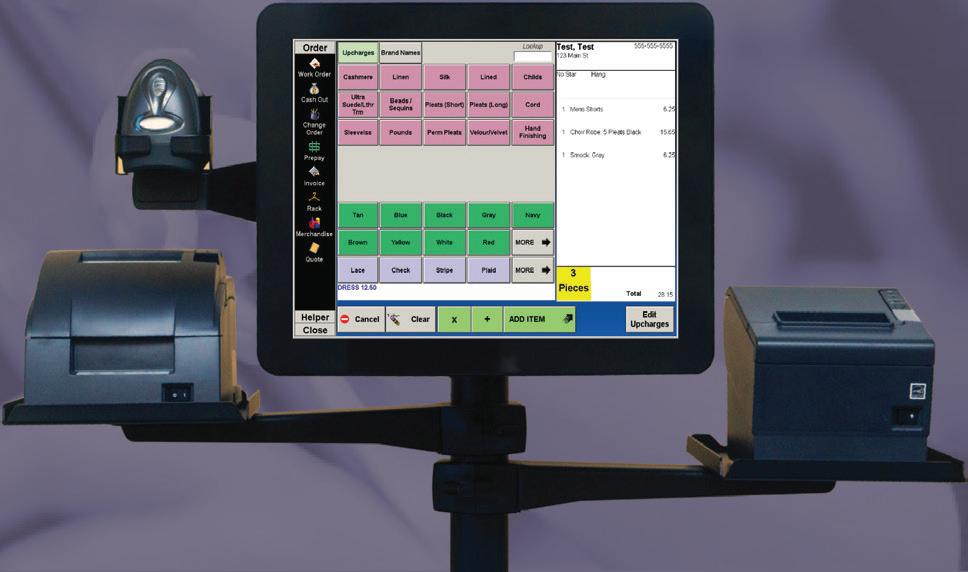
One of the main benefits of having a stock of parts available is that a dry cleaner can head off expensive repairs down the road by taking care of problems while they’re still minor.
Preventative maintenance is key to keeping these issues small. Some machines require regular cleaning, and, just as you need to change the tires on a car, there are parts that simply wear out after regular use.
Consider the heart of a drycleaning plant: the drycleaning machine.

“With drycleaning machines, one of the most common complaints is the poor drying,” says Bob Aldrich, president of Aldrich CleanTech in Worcester, Mass. “It could be from low freon levels, clogged air filters, the pneumatic valves that let the steam into the coils for heating are either not working or working poorly, or bad traps.”
When a drycleaning machine is operating poorly, Aldrich believes it quickly turns into a bigger problem.
“The neglect of the drycleaning machine is a direct correlation to a poor reflection of our industry to the consumers. The conditions we find some of these machines — the condition of the solvent, the filters, the separators, the tanks, the solvent coolers and heaters, the still condensers — is sometimes frightening. It makes for a bad product going out to the consumer, and it’s a black eye for our industry.”
Another problem Moore has found that all cleaners must deal with regularly is leaks.
“Steam and air leaks start as minor issues and turn into something major,” he says. “Now it’s really broken, and the cleaner needs parts. Now they need service. Now they need emergency service, which always costs more. And, as a lot of people have said within the industry, you detect them by listening, or by doing a walk-through, or by establishing some kind of a preventive maintenance program on your own.”
D’Autorio believes that a good preventative maintenance program solves two problems.


“It saves time, and it saves money,” he says. “Shutdowns are costly, and when something breaks, you’re down. So now you have the expense of trying to get the part if you don’t have one on hand, and that expense comes with overnight shipping, which is way more expensive than regular shipping.
“You also have the cost of an upset customer because you didn’t get their stuff done when you promised it to them. So, when you stay ahead of the curve and routinely maintain your equipment and evaluate it, the likelihood of a breakdown is minimized greatly.”
Also, as the pandemic fades and people need more clean-
ing done, now is not the time to have a machine down.
“Probably the most important aspect of preventative maintenance is just minimizing emergency service calls,” Aldrich says. “When the industry gets rolling again, and it’s crunch time for everybody, will there be a technician available in your area? How quickly can they get there?”


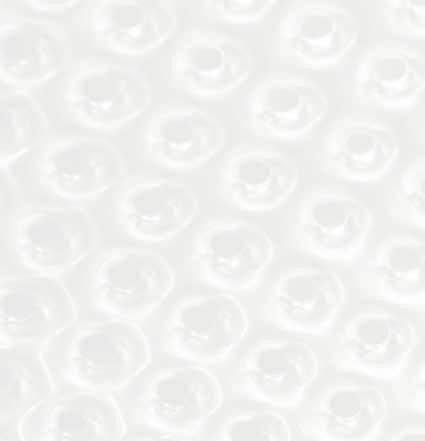

For D’Autorio, the first step of setting up a preventative maintenance program starts in one place: “Get all your manuals. Every piece of equipment you buy comes with a manual; if you don’t have the manual, contact your manufacturer. Each manual comes its own maintenance schedule — weekly, monthly, quarterly and yearly.”



D’Autorio suggests delegating weekly inspections, so that more eyes are available to check every machine. Also, the time of the week can be important for setting up a regular schedule.

“Most plants are slower on a Friday than they are on Mondays, so make Friday your inspection day,” he says. “Everybody inspects their equipment, wipes it down, makes sure it’s functioning properly and gives you a report of any issues that are starting to arise.”
Moore says that setting up a preventative maintenance schedule the correct way from the beginning is vital for future success.
“It really matters that, whoever sets up the program, they have an understanding of how everything works — how each machine is a part of the drycleaning process and how each machine impacts the finished product,” he says. “You can outsource someone to come up with a PM program for you, or you can do it yourself.”
Moore also cautions dry cleaners to keep human nature in mind.
“Create a schedule that’s relatively easy to maintain, because if you overcomplicate it, no one’s going to want to do it — including you,” he says. “You also want to make someone accountable. Create a checklist and have people sign off on it. It’s a sure way to track things and, ultimately, it gives you accountability for the future.”
If owners aren’t comfortable with setting up a PM schedule themselves, Henley suggests turning to the experts: “As a manufacturer of drycleaning machines, we have a recommended maintenance schedule for their model of machine. Our technicians can go over this schedule and help each individual cleaner tailor this program to meet their needs.”

While professional diagnostic tools are useful when making repairs, daily and weekly preventative maintenance
35 Pair Model
• SD-035JS Single Phase 110V
• SD-035JT Three Phase 220V
• Dimensions: 38" x 65"
56
• SD-056J Three Phase 220V


• Dimensions: 38" x 66"
72 Pair Model
• SD-072J Three Phase 220V
• Dimensions: 38" x 79"
• Easy to dry, put the individual shoes and or accessories on the arms and walk away.

• Short drying time with strong air flow. No heat = no shrinkage.
• Dry up to 35, 56 or even 72 pairs of shoes at a time.
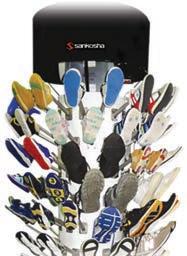
• Compact design, 40-inch diameter footprint saves space. Easy installation.


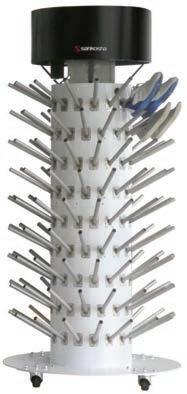

• Portable, can be moved easily with large caster base.
1901 Landmeier Rd., Elk Grove Village, IL 60007
TOLL FREE: (888) 427-9120 • TEL: (847) 427-9120 • FAX: (847) 427-9634 http://www.sankosha-inc.com






Jeff Jordan knows that finding the right mix of employees — and then keeping them on your team — has never been more challenging.
“You’re constantly churning, you’re constantly training and you’re constantly having to seek out new people,” says Jordan, VP of business development at Fabritec International.
Jordan spoke on a panel that addressed hiring and retaining employees at April’s SpringFest Expo, a series of webinars sponsored by the North East Fabricare Association (NEFA), the South Eastern Fabricare Association (SEFA), the Pennsylvania & Delaware Cleaners Association (PDCA) and the Drycleaning & Laundry Institute (DLI).
“A recent survey showed that 55% of your employees weren’t actively engaged in their job — they’re just there for a paycheck,” Jordan says. “Another 19% were actively disengaged — they were actually hurting you by being there altogether.”
Keeping the 26% of people who are engaged in their job has never been more important, Jordan says. One of the keys to building a long-term team is knowing what your unique advantage is in the employment market; in other words, what you offer to your team that other, perhaps bigger employers, can’t or won’t give to their employees.
To get quality employees, Jordan says, dry cleaners have to play the game differently than big companies, such as UPS and Amazon, that can throw money at situations. “A dry cleaner is part of a community,” he says. “You know the people who come into your store.”
Better still, when a good leader is at the helm, the employees know that they are seen as more than numbers.
“We have an advantage, as a small business, of being able to react and create new policies quickly,” Jordan says, “to help our employees achieve their goals and to figure out what it is our employees want from their job. Because, I promise you, it’s more than just their paycheck.”
Jordan cites Love ’Em or Lose ’Em, a bookby Beverly Kaye and Sharon Jordan-Evans. It lists, based on 15 years of research and thousands of exit interviews, the top four desires employees want from their jobs:
Exciting, Challenging or Meaningful Work — While pressing clothes might not seem exciting, Jordan urges leaders to dig deeper into what dry cleaners actually do.
For instance, dry cleaners, by the nature of their work, forge relationships with various parts of the community.
“Do you wash uniforms for local EMS, fire and police departments?” Jordan asks. “What about cheerleader and football uniforms? The work your employees are



Our products and market diversity make us unique. Learn more at poseidontextilecare.com.






poseidontextilecare.com (800) 256-1073


doing is impacting their community. They might have a son that plays football or a brother on the police force. That’s a close, personal connection to the community, and you can’t get that working at Amazon.”
Leadership is key to letting employees see their job in the bigger picture: “You set the tone for applying meaning and purpose to the work,” Jordan says.
Supportive Management (a Good Boss) — “CareerBuilder recently had a survey,” Jordan says, “where one out of three employees described their boss as a ‘nightmare,’ and an additional 11% said their boss is difficult to work with. That’s almost 50% of people having problems with their boss. Gallup found that 80% of turnover can be related directly to an unsatisfactory relationship with the boss.”
When there’s that kind of friction between leadership and the team, employee satisfaction plummets, absenteeism increases, and turnover is a constant issue.
“If your employees are scattering when you walk through a room, that’s a problem,” Jordan says.
So, how do you avoid the “nightmare boss” scenario? One of the best remedies is to simply walk through your plant regularly and talk to your team.
“If the only time you talk to your employees is where there is discipline or corrective action needing to happen, they’re going to be terrified to talk to you,” Jordan says.
Again, one of the main strengths that owners of small businesses have over huge corporations is the ability to get to know their people. This personal touch not only strengthens the morale of the team, but it is a simple, cost-effective tool that every leader should respect.
“A poll found that 36% of employees said that they’d rather have a better boss than a $5,000 raise,” Jordan says. “Make the boss the most important relationship they have in their environment.”
Being Recognized, Valued and Respected — A crucial part of being a supportive leader is to regularly recognize your team for the value they add to your business.
“Everyone loves to be appreciated, and we forget to do that,” Jordan says.
And, again, this doesn’t have to be an expensive perk or elaborate system set-up. Jordan found that, while working in a bank leading a call center operation, a $20 trophy was worth its weight in gold.
“The trophy cost me $12, and I got it engraved for $8,” Jordan says of the prize, which became a monthly rotating award for the top salesperson on his team.
Jordan did it in the beginning just for fun, but he soon learned a valuable lesson: “It seems kind of childish, and I didn’t think anybody would care that much, but it became the most sought-after award I had. It was so simple, but worked out great.”
Another way employees can feel recognized is to give them the means to share their appreciation with each other. Jordan’s team had a “Staff Shout Outs” board, where they could write small messages praising a co-worker for some specific action they’d performed.
“The employees will start to run with this,” he says. “You start to feed it and, all of a sudden, it’s going to run itself. That appreciation is going to come not just from the top down but from the bottom up.”
Management can still play a role in this form of recognition, Jordan says: “At any sort of team function, you can read these out loud. It makes a huge difference to hear the words spoken in front of your peers.”
The Opportunity for Career Growth, Learning and Development — “(Virgin CEO) Richard Branson is quoted as saying, ‘Train your people well enough so they can leave, treat them well enough so that they don’t want to,’” Jordan says. “This is a fantastic motto to live by. Sending employees to virtual meetings or regional training, bringing trainers in and paying them to attend those trainings … these things matter. Your employees bring the teachings back to the plant with them. It also demonstrates that you care about them.”
Making the workplace a zone where learning is encour aged is another simple way to raise employee morale.
“I know plenty of customers that do a book club, and they read business books, or anything in general to get their people engaged and churning to develop themselves,” Jordan says.
Another method that directly pays off for both the employees and management is allowing their team to crosstrain. Not only does this give the team member a greater skill set and flexibility, leaders might find the experience they’ve been looking for was there all along.
“If you have younger people who are more interested in the technology side of things, maybe they need to learn your POS system, and they can show you some things that you haven’t figured out,” Jordan says. “Or if you have people who are really into their social media and their phones, maybe they’re going to help you with your business social-media accounts. There are tons of ways that you can quickly do that as a small-business owner that you could never do in a large corporation.”
Because these efforts cost little to no money to put into place, Jordan believes they are great tools for leaders who want to increase employee retention and attract the best people for their positions.
“Take these advantages and make yourself a place (where) people want to work,” Jordan says, “as opposed to a place where they have to work.”




















 By Jessica Ayre
By Jessica Ayre

Your drycleaning business wants to overcome offseason slumps and attract more customers all year round. Customers want a quick way to communicate with your business on their own time, and texting is a great way to close the communication gap.
By enabling business texting for your drycleaning company, you’ll be able to draw more business and further your customer engagement. How? Here, I have five ways you can use texting to increase your revenue while also building a reputation for your business.




— Customers have a hard time remembering when pickup actually is. It’s common for customers to forget pickup times, or even how many garments they brought. With texting, you can help your customers remember to collect their things — and pay you for your service. Simply text them something along the lines of:


“Hey, [Name]! Your order is ready for pickup. Remember to collect your [4] garments before we close at 7:00 PM today!”
A gentle nudge can go a long way when it comes to maintaining your business. When you incorporate consistent communication with your customers, you’ll gradually see a difference the more you engage with them.
2. Request an Online Review Over Text — Reviews are the cornerstone of your business’s online reputation, but it can be difficult to get customers to submit them. The review process is typically perceived as a time-consuming task. It doesn’t have to be that way, though.
Get more customers to leave a review for your drycleaning business by offering incentives. People are more likely to help you out if you can give them something in return, so why not offer your customers a discount on their next purchase if they leave you a review?
Reviews can help build trust between you and your customers. Research shows that if people can read 10 reviews on your page, they’ll feel like they can trust you.
3. Appeal to a Younger Demographic by Texting Them — The younger generations might not see the need or importance of using a drycleaning service as much as their predecessors have. They might believe that it’s expensive or too time-consuming, or they might not feel their more casual attire needs professional attention.



Chances are the younger crowd might not even know the different services that cleaners provide, such as hemming, tailoring, repair or preservation.


These services can be promoted through text, which is ideal for Generation Z and millennials since they already spend a lot of their time on their phones:

“Good afternoon, [Name]! Just wanted to let you know that we also offer hemming and tailoring services in case you ever wanted to alter your garments.”
“Our preservation services will keep your treasured garments safe from aging for years to come. Text us for more information!”
When you integrate convenience within your business model, you’ll be able to draw a younger crowd and potential customers to your business.

4. Attract More Business During Slow Seasons by Texting Customers — Dry cleaners typically experience a drop in business during January and February. It’s the dead season after the holidays, and it’s right before warmer weather and more events:
“Spilled some wine on your favorite outfit during the holidays? We’ve got you covered!”
Take advantage of this slump and encourage people to get their spring and summer garments ready for upcoming events, such as Easter, spring dances, graduations, the wedding season and more. You can even encourage people to clean their household items, such as drapes and bedding.
Text your past customers about your discount specials to help increase sales during your slow months. Another great way to grab people’s attention is by texting them
facts about garment care, prompting them to reevaluate the condition of their current wardrobe.
5. Turn One-time Customers into Repeat Customers — Customers may not see the need to return to your business once they’ve completed their service, or they may not even think of you — even if they could use you. To avoid this, make sure that you are engaging your customers before, during and after their drycleaning service.
You can start by educating your customers on the importance of routine care for their garments, especially if valuable. Texting them regular tips is a great way to keep customers engaged and loyal — and will help them understand why they need to come back.
Send texts about promotions, specials and referrals. Go the extra mile and inform your past customers about company updates, along with seasonal reminders: “Hey, [Name]! Easter Sunday is coming up, and we want you to look your best. Be sure to come to us for any of your drycleaning needs!”
These friendly nudges can help you maintain your relationships with your customers — and keep them coming back to you on a regular basis. ADC
Jessica Ayre is a content marketing specialist at Text Request, a business texting solution.
For decades, The Clean Show has been the time and place where the drycleaning community comes together to meet industry leaders and see what they have to offer, both now and in the coming months.
This gathering got pushed back a year because of the pandemic but if there’s one thing this most challenging of times has taught us, it’s that we can roll with the punches and find new methods of reaching our goals.
No Clean Show … no problem!
To fill the gap, American Drycleaner wants to
bring our readers together with our display advertisers of 2021 to date and allow you to meet up within our pages.
These companies have been adapting to meet the evolving needs of their clients and finding ways to move the industry forward into better days ahead.
Any claims made in this feature are those of the participants, and not those of American Drycleaner. This issue is your ticket in, so visit all the “booths” and let’s get this show started!

American Express (NYSE: AXP) is a globally integrated payments company that provides customers with access to products, insights and experiences, which the company states enrich lives and builds business success. Its integrated payments platform includes card-issuing, merchant-acquiring and card network businesses. American Express considers itself a leader in providing payment products and services to a broad range of customers, including consumers, small businesses, mid-sized
companies and large corporations worldwide.
American Express offers resources it says help to support drycleaning business, and offers benefits including discounted supplies, special savings and offers, insights, payment solutions and more. In 2020, American Express made more than $15,000 in discounts on business services available.1 To learn more on how to get special discounts from its partners with Amex Offers for Merchants, visit the company’s website.
1 Based on savings available to American Express Merchants as of December 31, 2020, in Amex O ers for Merchants. Total value assumes Merchants take advantage of o ers for the full length of any subscription terms where relevant. O ers and value of o ers are subject to change without notice to you. Not all o ers are applicable to all Merchants. Visit the website to see o ers that are currently available.
Established in the U.S. in 1984, Union Drycleaning Products says it specializes in drycleaning excellence. Union is the flagship brand of the FMB group, one of the world’s leading manufacturers of professional drycleaning machines, located in Bologna, Italy.
Headquartered just south of Atlanta, Union offers the drycleaning industry a full line of machines that utilize all of the sol vents now available in the U.S. Union says its machines are noted for their innovative design, cutting-edge technology, safety of operation, unmatched customer service, and full compliance with federal, state and local regulations.
As the largest manufacturer of textile drycleaning equipment, Union states

that it offers machines for use with all Class III-A alternative solvents as well as perchloroethylene. A new model, the Ideal Pro, will soon be unveiled; it will offer a dry-to-dry wetcleaning process.
During the pandemic, Union was able to remain open as an essential business, saying its top priority was to take care of its most valued asset: its employees. Union implemented new safety and health pro tocols to ensure that everyone remained safe and healthy. The company says it prides itself in its customer service and recognizes that, during this time, it is even more important to make sure its customers are well taken care of so that they can take care of their own customers.
uniondc.com 800-433-9401
“
Doing business without doing harm” has been the mission statement of GreenEarth® Cleaning since its birth in 1999. The company has aspired to provide the best possible fabric care with the lowest environmental impact to its network of member partners in more than 6,000 global retail points of service.
The company states that the last 15 months have highlighted the value of its unique model that emphasizes support for individual members through technical operations and marketing expertise while providing proprietary products proven to lower the cost of running a fabricare busi ness. In the first six months of the pandemic alone, GreenEarth initiated more than 25,000 contacts, ranging from “virtual” site visits addressing operations support to cre ating unique social media content to home delivery marketing and management.
While the pandemic interrupted the rollout of the SeaClear microfiber laundry filter testing, it opened the door to exploring a defensive but proactive cleansing system modification, GreenEarth says. This system is based on the World Health Organization’s determination that the lipid layer of the coronavirus could be attacked with heat of at least 158 degrees Fahrenheit for 30 minutes. GreenEarth contracted with MRIGlobal, an independent laboratory approved for testing with SARS-CoV-2. The company says that tests showed GreenEarth’s process to have a kill rate that is six times more effective than heat alone — without any additive chemicals.
GreenEarth has since filed a provisional patent covering a modified drycleaning pro cess to allow for antiviral dry cleaning when the virus contains a protective lipid layer.
greenearthcleaning.com info@greenearthcleaning.com 877-926-0895

Shah Corporation’s Cleaner Business Systems (CBS) says it is constantly changing to stay ahead of an endlessly shifting business climate. Its continuously evolving web-based platform gives its customers the ability and flexibility to reshape their businesses as the demands of their world change, all while providing end-to-end technology support.
CBS acts as a central hub for any drycleaning operation. Robust features such as customer management, assembly system integrations, electronic customer notification and inventory management all act to provide a world-class point-of-sale system, the company says.
CBS says its pickup and delivery system can be as simple and straightforward as any route system. The company’s Clean Route system can optimize the driver’s
routes, and its text messaging system can allow customers to opt in or out of their pickups and deliveries from their phone. This allows cleaners to avoid making unwanted stops.
The company’s text-messaging integrations enable cleaners to automate curbside pickup and drop-off services, provide customer notifications for drop-offs or finished orders, and offer two-way customer communication. Cleaners are given the option to deliver receipts to their customers via text, email or print. New marketing features are also on the way!
CBS says that it designed its system to make managing your drycleaning business a breeze. You’ll know what needs to be cleaned, when it’s due and how much business has been done without ever needing to be at the store.
royal-basket.com sales@royal-basket.com 800-426-6447
cleanerbusiness.com sales@cleanerbusiness.com 800-406-9649

Royal Basket Trucks Inc.® continues to offer superior cart solutions to support dry cleaners, coin-op laundries and commercial laundries. Located in Darien, Wisconsin, Royal® has been manufacturing carts for nearly 40 years and has become a recognized brand in the industry. Royal believes that carts should be made to fit into various environments to improve your workflow and process efficiencies.
The company states that its innovative product line offers a variety of features and ergonomic benefits to keep your operations running at the highest level.
Royal provides standard products as well as heavy-duty and custom solutions, and says its engineering team is dedicated to making any size cart fit your environment for optimal efficiency.
Royal’s full line of wire laundry carts are produced in Wisconsin and feature a du
rable, black vinyl-dipped wire basket with PVC topping mounted to a powder-coated steel base with polyurethane casters. Hangers, dividers and inserts are available.
Royal says that the ergonomic benefits of elevated carts for sorting, collecting and workstations speak for themselves. These elevated carts are available in plastic and vinyl, and both styles roll smoothly on non-marking polyurethane casters.

The Royal product line features basket trucks, poly trucks, bulk linen carts, scale carts, hampers and more for sorting, collecting, processing and transporting.
The company says it is built on a solid foundation of innovation, hard work, creativity and extraordinary quality. Its service is supported by years of experience within many industries and environments. Every cart is manufactured to order and ships in a short lead time.
Girbau North America (GNA) — a provider of textile care laundering equipment and support services — says that it can help dry cleaners enter new, profitable markets, including textile restoration, commercial laundry and residential wash-dry-fold, while also increasing plant percentage of cleaned items processed through water.
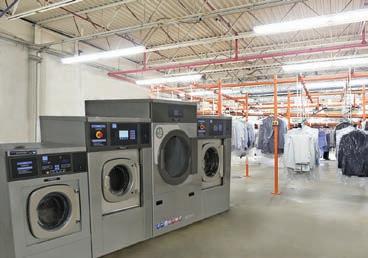
The array of unique features from GNA’s Poseidon Textile Care Systems® makes it possible to precisely wash and dry virtually any textile type, including wool, LYCRA™, rayon and silk, the company says. This is thanks to heightened machine program mability at a fraction of the cost of dry cleaning with no additional labor finishing work or time, it adds. GNA also claims that Poseidon flatwork ironers allow dry clean ers to serve commercial and residential
accounts by quickly ironing bed and table linens. The company says that Poseidon’s textile care solutions are helping shift the professional fabricare industry from traditional dry cleaning of dryclean-only garments into new areas of expertise and service that generate revenue without damage to the environment.
According to GNA, other benefits of Poseidon include a dramatic reduction of capital outlay and increased production per square foot when compared to drycleaning equipment. A Poseidon washer/ dryer pair are about a third of the cost of a drycleaning machine, the company says, yet capable of delivering the same quality results in less time. Additionally, GNA says that they offer simple installation, greater productivity and a quick return on investment (ROI).
poseidontextilecare.com 800-256-1073

Pariser Industries has been innovating, manufacturing and providing techni cal support for drycleaning chemical spe cialty products for more than 50 years. The company has continually served its custom ers (both before and during the pandemic) at the field and manufacturing level, it says, working to provide them with the best out comes in their cleaning applications.
Recently, Pariser has launched several new products:
• BAC-BAN, a non-bleach laundry sanitizer that provides a residual bacterial barrier after washing.
• E.Z.DET, a ready-to-use injection detergent for non-immersion spray-type drycleaning machines designed to reduce pre- and post-spotting time requirements.
• OM DETERGENT, designed, along with a selective blend of solvents and deter-
gents, to degrease and remove oil from table linens in less-than-optimum hotwater applications, without excessive alkalinity.
Pariser says cleaners recognize it for providing quality laundry, drycleaning, and wetcleaning products to the industry, adding that its extraordinary growth across the country substantiates this.
The company is proud of the support it provided to its customers during the pandemic, with its representatives visiting customers and responding to concerns daily. Issues ranged from sampling boilers for water treatment analyses, reprogramming washers or maintaining chemical dispensing systems, and dealing with garment stain or finishing issues to simply commiserating over the lack of business activity. Pariser representatives have remained an asset to their customers.
Sankosha founder Mitsuyuki Uchikoshi began as a dry cleaner. Running a cleaning store, his eyes always went toward one thing – the pressing machines. He was constantly thinking of new machine ideas that would make it easier for dry cleaners to operate their businesses and become more profitable. Eventually, after giving it a lot of thought, he decided to become a manufacturer.
Sankosha says that its reputation is known for providing products with laborsaving designs, coupled with seamless longevity to provide their customers with years of satisfaction.
In today’s times, diversification is a smart strategy to help grow additional business. With this in mind, Sankosha USA says it is excited to announce the latest addition to its lineup.
Its new Shoe and Accessory Dryer will allow cleaners to provide additional services to their existing customer base and attract millennials and non-traditional customers, as well, the company says. There are three different models to choose from to allow cleaners flexibility in selecting the right one for their operations. These dryers come with a compact design and a 40-inch-diameter footprint that saves space, along with simple and easy installation.
“Customer First” and “Supreme Quality” are the mottos that Sankosha says it carries forward in order to satisfy its customers with its products and services for the next quarter-century.
Sankosha USA thanks everyone who has helped them become a recognized and trusted leader in the industry.

sankosha-inc.com info@sankosha-inc.com 888-427-9120
Garment Management Systems (GMS) states that its flagship prod uct, the QuickSort Assembly System, pro vided the industry a more cost-effective and reliable solution to production assem bly. Now, GMS looks to do it again with its QuickTAG and 247Express systems.

As a growing number of cleaners look to automation to reduce labor cost, many have turned to automatic baggers. QuickTAG provides a cost-efficient and dependable way to integrate an automatic bagger with the assembly and point-of-sale systems, the company says, and attaches the invoice to an assembled order. By using an automatic bagger with QuickTAG and QuickSort, cleaners can
realize immediate labor cost savings with a system that is about half the price of a fully automatic system.
Garment Management Systems says that its newest product, 24/7 Express, will meet your customer’s demand for acces sibility and service in a clean environment, all while reducing labor cost. This fully automated drop-off and delivery system provides the convenience of a drop store without the expense of an employee, and service is available to the customer 24 hours a day. Dry cleaners retain their branded presence in the community with a modern store presence, without the inef ficiency of a manned drop store.
garmentmanagement.com 501-420-1682
alwilson.com 800-526-1188
For more than 90 years, the A.L. Wil son Chemical Co. has been assisting its drycleaning clients with their efforts in removing the stains in their custom ers’ textiles. By offering several types of high-performance stain removers for the kinds of stains cleaners see most often, as well as an array of specialty products to remove specialized stains, the company says it constantly works to meet the needs of cleaners, no matter what customers bring to the front counter.
With piece counts still down, A.L. Wilson believes that exceeding customer expectations is more important than ever. A.L. Wilson stain removers are great tools for you to use to deliver the highest
garment quality possible, the company says. Now more than ever, stain removal matters.
EasyGo® is a versatile drycleaning stain remover and leveling agent, the company says. It can be used as a high-performance spray spotter, a cost-effective P.O.G., and an effective leveling agent for controlling moisture after spotting. A.L. Wilson suggests using EasyGo to help deliver the effective stain removal your customers desire.
A.L. Wilson stain removers are great tools for cleaners to deliver the quality their customers are looking for, the company says, enabling them to achieve a spotless reputation.

The National Cleaners Association (NCA) is a professional trade organization dedicated to the welfare of consumers and the professional cleaners and suppliers who serve them.
For more than 50 years, NCA says it has been at the vanguard of education, research and information distribution concerning garment and household fabric care. According to the organization, elected officials, government agencies, consumer groups, fashion designers and major media outlets have recognized and responded to NCA’s activities, reports and tradition of excellence.
NCA says it offers its members a wide range of benefits, including health and business insurance designed for dry clean

ers, in-person on-site training, and govern ment-required training classes, along with webinars, presentations, ideas, trends and forecasting. NCA also assists its members with email and other marketing assistance, Green Cleaners Council certification, and networking meetings and events.
The association says that its long-term working relationships with designers and garment manufacturers were developed in an effort to eliminate the production practices that can result in unserviceable garments.
NCA also offers a consumer newsletter, along with other publications, designed to provide dry cleaners with information about garment care and other topics of interest.
nca-i.com info@nca-i.com 800-888-1622
SPOT Business Systems has been a leading provider of software to the drycleaning industry since the early 1990s.
Over the last several months, the company has been working on the next generation of drycleaning software. This software, it says, will solidify its leadership position by providing a powerful system to help dry cleaners navigate the day-today and long-term operational needs of their businesses. Connect, SPOT’s newest application, will deliver sophisticated analytics, world-class navigation and robust functionality, the company says, all wrapped in an intuitive interface to benefit dry cleaners everywhere. Connect will be widely available during summer 2021.
During the challenging times the industry has faced over the last year, SPOT
says it has partnered with the drycleaning industry and its valued customers. That partnering has come in a few different ways. SPOT has been providing weekly data trend snapshots, with the goal of providing the industry with sound data to make great business decisions as customer behaviors continue to evolve. SPOT has also provided billing concessions for its customers’ software licensing fees during the hardest-hit months, as well as taking the opportunity to sponsor different virtual events and work with the many industry associations in a tangible way that benefits the overall community.
SPOT says it is continuing to look for meaningful opportunities to partner with this great industry and looks forward to better months ahead.
fabricaremanager.com sales@fabsyspos.com 770-966-9323
spotpos.com sales@spotpos.com 801-495-1200

Fabricare Manager Point of Sale System has been a leading industry standard for more than 25 years, Fabricare Systems says. Its time-tested platform can be run as a self-hosted or cloud-based system. The company claims its tech support is second to none, and when you call, you will always talk with a real person.
With its new Customer Gateway and Route Dashboard, you can manage your routes to include messaging customers, adding stops and moving stop numbers. Driver out for a day? Not a problem, because you can optimize the route delivery based on current and past traffic conditions. The dashboard can be used in both cloud-based and self-hosted environments.
You can also have apps in the app stores for both iOS and Android. These
apps are skinned with your logo and allow customers to view their order status, profile information and add or change credit card information.
During these trying times, Fabricare’s Customer Gateway allows your customers to reach out to you by sending “On My Way” requests and allows new and current customers to sign up or move to your route services. Fabricare has also expanded its partnerships with thirdparty kiosk companies, allowing for 24/7 contactless pickup and drop-off services. The company says these features in Fabricare Manager have aided dry cleaners in navigating through troubled times.
Fabricare says it has its software all over the world. From Washington to Florida, from Aruba to Ireland, you will find many dry cleaners using Fabricare Manager.

National Fire and Indemnity Exchange (NIE) was founded in 1915, and insures hundreds of dry cleaners, serving all 48 continental states from NIE’s office in St. Louis.
Coverage available through NIE includes Building (when the building is owned by the dry cleaner), Business Personal Property, Loss of Income, Liability, Crime, Bailee (covering customer property), and Equipment Breakdown. NIE also provides access to workers’ compensation insurance underwritten by other insurance carriers.

NIE helps cleaners get proper insurance every day, with a team who has experience with almost any problem your business will ever face. Cleaners can
work directly with NIE’s experts, or, if they prefer, they can access NIE through their local agent.
NIE claims that its financial ratios are stronger than most insurance industry giants, and the company buys reinsurance from companies with aggregate surplus of more than $15 billion.
The Exchange’s policyholders appoint an attorney-in-fact to manage the Exchange. They also elect a committee to advise the attorney-in-fact of policyholder needs and preferences, what to do with the Exchange’s profit, how the Exchange’s assets should be invested, what actuarial firm should analyze the Exchange’s loss reserves, and what CPA firm should audit the Exchange’s financial statements.
nieinsurance.com info@nieinsurance.com 800-325-9522
With more than 28 years of experience and development, Royal Touch™, a point-of-sale software package for dry cleaners and tailoring businesses nationwide, serves more than 25% of the drycleaning industry, says Royal Western Computer. In 2019, Royal Touch joined with POS technology provider UP Solution® to improve customer support, provide access to payment integration technology for its users and further solidify customer brand loyalty.

Royal Touch features a simple and intuitive user interface that allows any level user to start using its solution with minimal training. The company also says it offers a wide variety of useful built-in features, such as SMS alerts and recurring billing settings. Built-in payment integra-
tion — including contactless payments — is also offered to allow for more efficient and seamless management, while minimizing physical contact during the current pandemic environment.
With new features such as a merchant mobile app, online delivery features, cloud backup, and other value-added upgrades, the company says it plans to further expand its coverage and make itself the goto POS solution for the cleaning industry.
In order to support the increasing demand for its solution, Royal Touch is actively recruiting new resellers to join its network. Whether you own and operate a dry cleaner or are affiliated with the drycleaning industry, the company says it will help you grow as a POS reseller in your respective market.
upsolution.com sales@upsolution.com 855-835-7919
Iowa Techniques, a designer and manufacturer of unique parts and equipment for the drycleaning and laundry industry, says that its products are developed from years of experience in the garment cleaning industry. It also acts on requests for products, improving the quality and efficiency of cleaners throughout the nation.

The company produces equipment across the spectrum of the drycleaning process, including conveyors, damp boxes, ozone generators, dynafluid valves, heated collar cones, shirt scrubbing tables and more.
Iowa Techniques offers a drop box system that helps to connect dry cleaners
and their customers after business hours. The company says that its convenient, 24hour drop-off solution enables cleaners to keep their customers happy — and loyal — no matter when those customers need to conduct their drycleaning business. The company offers both free-standing and wall-mounted versions of their drop box system to fit any situation.
The company also has equipment for dry cleaners who make deliveries to their clients. Iowa Techniques says that its rail systems can fit almost any delivery van — mini, regular, stretch, Transit or Sprinter — and its easy-to-install rail kits require no welding.
iowatechniques.com info@iowatechniques.com 800-727-1592
Parker Boiler says it has dependably furnished steam and hot water for dry cleaning and other types of service throughout the United States and the world.
Parker states that its tube bundles are extremely flexible and offer a long life — along with a 25-year warranty against thermal shock. Safety, the company says, is its No. 1 priority. No Parker boiler, the company points out, has ever been known to experience an internal explosion, nor has it been possible to induce an explo sion under severe testing. The heavy steel, all-welded flexible construction cannot be surpassed for safety because it permits free expansion and contraction with temperature changes, it adds.
Parker Boiler produces gas, oil or combination gas/oil firing models, and
low NOx is available on all models. Most models are also UL or ETL Listed.
While it is proud of its past, the company says it always has an eye on the future. Its ParkerView Lead Lag (PV-LL) panels provide a complete boiler control and monitoring system, are customdesigned for each application, and can also accommodate the control and monitoring of various equipment. Also, because the PV-LL system can be monitored remotely, the company says it has the ability to provide live online support during a start-up and make any necessary updates to the system.
To view an online brochure of Parker Boiler’s equipment, visit the website, or call or email for more information.
parkerboiler.com sales@parkerboiler.com 323-727-9800

weddinggownspecialists.com/ member-testimonials info@weddinggownspecialists.com 800-501-5005














It’s a tough time to be a dry cleaner, but it’s a great time to be a Certified Wedding Gown Specialist™!
The Association of Wedding Gown Spe cialists says profits from wedding gowns made it possible for many of its members to stay open during the pandemic, and it can help others who are struggling with reduced piece count to attract more gowns. Through June 30, 2021, the Associa tion is slashing its initial membership fee by 75%. Qualified cleaners with limited resources in market areas that do not al ready have Association members can take advantage of the reduced fee to benefit from trademarked logos, special training in the restoration of vintage gowns and veils, and powerful internet partnerships.
Wedding industry experts say there
will be as many as 40% more weddings than normal this year. Brides will be looking for cleaners they can trust because they specialize in wedding gowns. Cleaners who join the Association set themselves apart from ordinary cleaners; members are Certified Wedding Gown Specialists™. There is a written international guarantee of the Association’s trademarked MuseumCare ZeroCarbon green gown preservations, and every Specialist™ honors the guarantee of every other Specialist. Free pressing is offered when the gown is to be worn again.
This unique guarantee, together with international marketing promotions, strongly appeals to brides, the Association says, and assures new members of immediate growth and greater profits.

Brian Butler, president of Dublin Cleaners, joins us to discuss how to





Jennifer
Tom

 By Joel Jorgensen
By Joel Jorgensen
Spurred by the pandemic, drycleaning businesses are looking for ways to sanitize laundry loads in order to differentiate themselves from the competition, draw new customer accounts, boost revenue and provide the cleanest, healthiest environment possible.

These goals can all be accomplished by adding sanitization, verifying that loads completed meet the parameters needed to achieve sanitization, and monetizing sanitization through gained efficiencies and wash results.
Practically speaking, it’s easy to add sanitization to laundry loads, either through the use of ozone or an EPA-registered chemical sanitizer additive. The only catch is that ozone use requires special washer seals as it can degrade rubber, while chemical additives require washers with automatic chemical-injection capabilities. But which option is right for you?
Ozone (O3) — used in the industry for years — is a powerful cleaning agent that works best in cold water. It’s the third oxygen atom of ozone that attaches to and breaks down organic materials in the wash, including soils, viruses, bacteria and molds. Once broken down, these materials are removed from fabrics during the wash cycle. Ozone systems are easily installed via a connection to a compatible washer and offer up to a 99.9% pathogen kill rate.
If ozone isn’t an option, dry cleaners can also sanitize wash loads using an EPA-registered chemical sanitizer that’s injected into the wash cycle. These work in combination with automatically injected detergents. A chemical sanitizer’s sole purpose is to eradicate close to 99% of the pathogens and molds found in laundry. A programmable washer with automatic injection capabilities is easily connected to a dispensing system provided by your chemi-
cal representative. That system automatically injects the chemicals according to specific washer programs.
Once you add sanitization, you need to be sure all program parameters are met and carried out. Some equipment brands verify that sanitization was achieved by monitoring two variables in the wash process: water temperature and time of exposure. This is critical because the ozone’s effectiveness is depleted if water temperatures or exposure times are not met. Similarly, the activation of chemistry is not maximized if required temperatures and exposure times are not achieved.
The verification process, in the case of Poseidon Textile Care, is available as an add-on module, powered through a cloud-based networking system. This allows facilities to oversee and manage equipment processes and productivity. The system monitors the wash process and verifies that pre-set parameters of temperature and time are achieved. If water doesn’t hit programmed temperatures, for example, users receive an alert.
With a verification system, it’s easy to align with laundering guidelines established by the Centers for Disease Control (CDC), World Health Organization (WHO), and Hygienically Clean certification standards or processes.
At the end of the day, sanitization and its verification are monetized through operational efficiencies and management, by reducing processing time and rewashes, preventing textile degradation, and maximizing chemistry.
If you’re interested in offering sanitization, I suggest contacting your equipment distributor and/or chemical rep. This will save you time in the long run. ADC
Joel Jorgensen is vice president of sales at Girbau North America.
tasks can be accomplished by simply paying attention.
“Once you fire up your boiler in the morning, after about 15 minutes, you should do a walk-through of your plant,” D’Autorio says. “If you see steam coming out of anywhere — a press, a pipe or wherever — you have an issue. You’re burning energy and you’re losing money. Then, at the end of your day, turn your compressor off and walk your plant. If you can hear air, you have a leak somewhere. Those are two things that are always neglected. They’re easy fixes and you can save yourself money.”
Aldrich says when it comes to conveyors, a lack of lubrication on the carrier pins and the wheels is commonplace.
“A lot of cleaners, if they push the button and it turns on and brings the clothes down, they’re happy,” he says. “We’ll go in and hear it making all kinds of noise and screeching. What happens, especially with the up-anddown conveyors, is that the actual chain will stretch enough that, if you walk into the plant, you’ll see the chain kicked out at almost a 30-degree angle. The actual framework of the conveyor extends and starts breaking the aluminum support carriers, and it becomes a nightmare.”





Henley believes that taking care of the basics on a machine can also pay dividends — with cleaner clothes now and fewer problems in the future.
“Some cleaners don’t take the time to manually clean their still — where the solvent is distilled or purified — on a regular basis, or clean or change the filters as needed,” he says. “These steps ensure that the solvent is clean and gives them the best cleaning performance.”
Other necessary PM tasks are just as easy.


“The lint filters and button trap should be cleaned after every load,” Henley says. “It’s as simple as hitting the ‘open lock’ button on the computer, pulling the button trap out and getting the lint, coins, paper clips or anything that might have come out of the garments that were missed before loading the machine. It only takes a minute or two.”
Neglecting the simple things like cleaning the button trap can lead to bigger problems down the road, Henley warns.
“A paper clip, for example, can get missed when the cleaner checks the pockets,” he says. “The clip can come out of the pocket and go through the piping. If it bypasses the button trap, it can get into your solvent pump. There, it can potentially crack the ceramic. Now, there’s solvent leaking out, and solvent can get expensive.”
Moore suggests that dry cleaners shouldn’t ignore the reality of what it is they do for a living, and how it affects their machines and their environment.
“In dry cleaning, dust and dirt is really our business,” he says. “Otherwise, those clothes wouldn’t come in. And unfortunately, dust and dirt are our biggest enemy
as a service company, because it gets everywhere. A lot of dry cleaners ignore lint, dust and dirt around critical parts of the store. A lot of machines now run on inverter drives, for example. In just the last week, we sold several of those — and they’re very expensive — because they were plugged up with lint.”

Moore also asserts that lubrication is not “a good idea” but a necessity.

“Pretty much every machine has grease fittings on it,” he says, “that say right on them, ‘Grease Monthly.’ And again, that comes down to creating standard practices that will keep repair people away and keep you in business.”



Building a preventative maintenance schedule into normal activities and keeping a stock of supplies on hand is not a drain on time and resources but, instead, is an investment.

“The equipment is so much more expensive and is so much more complex than it was years ago,” Aldrich says. “The nice thing about our equipment now, though, is that the maintenance schedules aren’t as frequent as they used to be. But, if you neglect them, the repairs can get very expensive. With the proper parts and maintenance, cleaners can get better performance and a longer life out of their equipment.”
“Being aligned with a decent service provider can go a long way,” Moore says. “Ask your service provider to identify or assist you in coming up with a periodic preventative maintenance list. Most of us will do that and give you some guideline in terms of where to start.”
“Time is money,” D’Autorio says. “We’re busy enough in this industry as it is. If you don’t do the small stuff, you’ll pay for the big stuff.”
2021 RATES: One- to five-time rate: $2.20 per word, boldface $2.30 per word. Minimum charge: $25.00 per ad. Call or write for our three- and 11-time rates. If box number is used,



add
For
DEADLINE:
2021 RATES: One- to five-time rate: $2.20 per word, boldface $2.30 per word. Minimum charge: $25.00 per ad. Call or write for our three- and 11-time rates. If box number is used, add cost of 5 words. Display classified rates are available on request. All major credit cards are accepted.

Ads must be received by the 1st of the preceding month. For example, for a June ad, the closing date is May 1st.
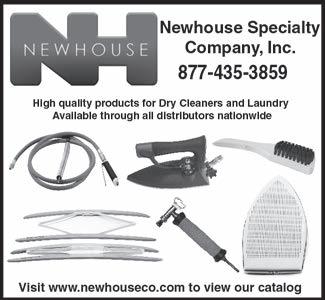











10 YEARS AGO. To Coupon or Not to Coupon? — Using coupons to bring in business is a classic marketing strategy, but some dry cleaners debated their use in a survey conducted by American Drycleaner. Most dry cleaners (84.0%) reported that they issued coupons as part of their advertising and marketing efforts, and many operators (43.5%) said they use coupons “often,” while 15.3% made these offers “every few months.” A little more than a quarter (25.2%) said they issued coupon specials “occasionally,” leaving 16% saying they never used coupons. “Coupons are lousy for the drycleaning business,” one operator said. Still, other cleaners swore by the practice. “Our company has had weekly coupon offers in the Sunday newspaper for more than 50 years, and 40% of our base uses them,” another operator said. “We also offer lesser coupon discounts on our website 24/7, and their use is growing.”
25 YEARS AGO. Discriminatory Pricing? — To encourage every industry member who does not have a written, working, practical policy that avoids even the hint of pricing based on gender, the Mid-Atlantic Cleaners & Launderers Association decided to offer advice and best practices. The group held a series of training programs — “Avoid the Pitfalls of Gender-Based Pricing” — at three
locations in Virginia in June 1996.
50 YEARS AGO. Waiting on Tax Refunds — According to the IRS, taxpayers were advised to wait at least 10 weeks for their tax refunds. “They say it’s virtually impossible to find a particular return to answer a question if the processing isn’t complete,” American Drycleaner reported. “But, if you filed on time, the IRS must mail your refund within 45 days of April 15th — or they must pay you 6% interest.”
85 YEARS AGO. Smooth Sailing — The Allied Trades Convention, held

in Hot Springs, Va., in April 1938, went smoothly — so smoothly in fact that General Manager Walter Franks apologized, saying that everything ran so well that he had nothing dramatic to add to his report. There were gains, however; there was increased membership and cash balance, as well as “decided progress in handling the matter of drycleaning exhibits.” Elections of the board of directors and fellows also took place, as did the golf tournament, which offered prizes ranging from a musical cocktail shaker to a club bag. ADC
—Compiled by Dave Davis, EditorProductshaveproventolastupto10timeslongerthansimilarproductioninthisindustryandapplications.
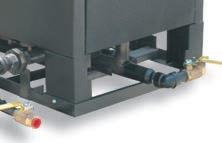


Wehavemanyinstallationswithsteamboilersthathave beeninserviceforover50-years,10hoursperday.


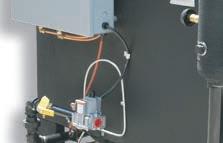

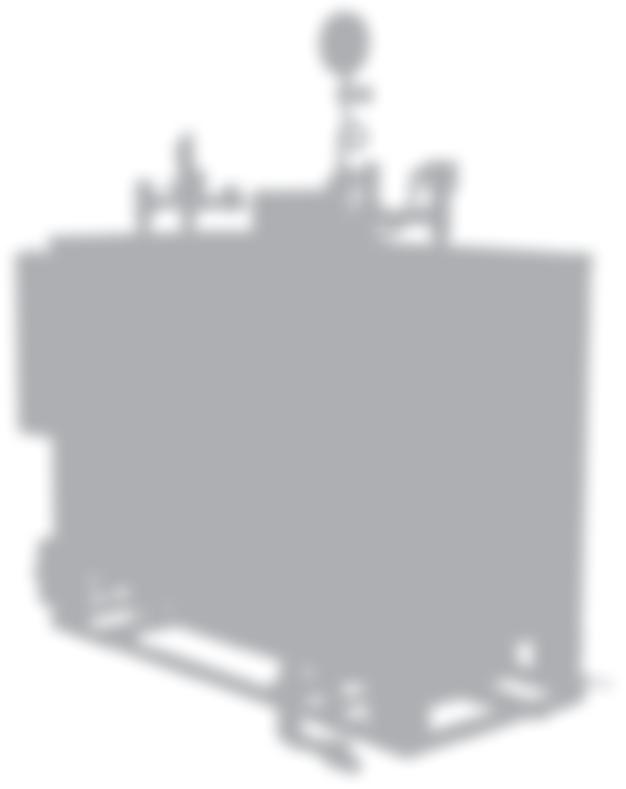
Thematerialsusedincurrentproductsarebetterthanthe materialsused50yearsago.Forexample,inthe80’s,steam drumwentfrom3/8”thickto1/2”thick.
Ourheatingsurfaceoramountofsteelabsorbingenergy hasalwaysbeen2to3timesthatofotherunits(upto6sf ofheatingsurfaceperboilerhorsepower,whichsomeunits arecloserto2sfofsteelperhp,andsomeeven1sf).





Wehavethebestdistributedflameormostevensurface areaevenlydistributedundertheentirepressurevessel.It isalsoamodulardesign,soitcanberepairedeasily.
TubeswentfromSeamlessratedpipetoseamlessrated tubingwhichisnowannealedwhichgivesthemateriala millscalecoatingforlongerlastingandless corrosionresistance.
Thicknesswentfrom.133pipewith10percentunderto.12 with10%over,andisalways.133walltubing.
Maximized Sustainability.
Maximized Sustainability.
TESTED AND PROVEN
TESTED AND PROVEN
GreenEarth formed in 1999 to assist an environmentally challenged industry in moving forward
GreenEarth formed in 1999 to assist an environmentally challenged industry in moving forward






During our first 12 years, several perc alternatives made unsupported environmental claims
During our first 12 years, several perc alternatives made unsupported environmental claims
In 2011, the Canadian Minister of the Environment published an 83 page report
In 2011, the Canadian Minister of the Environment published an 83 page report
Its conclusion: GreenEarth is “non-toxic to the environment and its biodiversity”
Its conclusion: GreenEarth is “non-toxic to the environment and its biodiversity”



Since the 2011 report, cleaners, property owners, retailers, and financial institutions have relied on GreenEarth as the unquestioned leader in meeting corporate environmental, safety, and governance (ESG) goals.
Since the 2011 report, cleaners, property owners, retailers, and financial institutions have relied on GreenEarth as the unquestioned leader in meeting corporate environmental, safety, and governance (ESG) goals.
CANADIAN ENVIRONMENTAL PROTECTION ACT, 1999 REPORT OF THE BOARD OF REVIEW FOR DECAMETHYLCYCLOPENTASILOXANE (SILOXANE D5)
CANADIAN ENVIRONMENTAL PROTECTION ACT, 1999 REPORT OF THE BOARD OF REVIEW FOR DECAMETHYLCYCLOPENTASILOXANE (SILOXANE D5)



www.greenearthcleaning.com/CAN-Study
www.greenearthcleaning.com/CAN-Study
